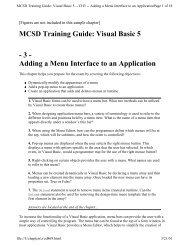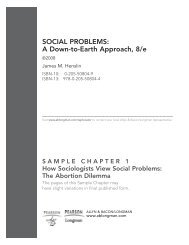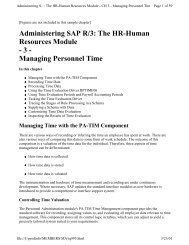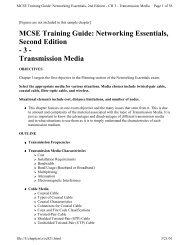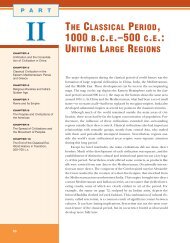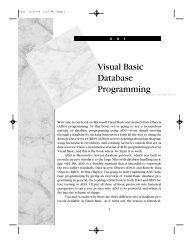CULTURE, language, AND COGNITION
CULTURE, language, AND COGNITION
CULTURE, language, AND COGNITION
You also want an ePaper? Increase the reach of your titles
YUMPU automatically turns print PDFs into web optimized ePapers that Google loves.
GA305c05.qxd 4/30/2004 11:26 AM Page 106<br />
106 culture, Language, and cognition<br />
In an early review of the cross-cultural literature, Dasen and Heron<br />
(1981) recognized that differences in the ages at which the substages of this<br />
period are attained do occur. However, they go on to stress that “in emphasizing<br />
these cultural differences, we may overlook the amazing commonality<br />
reported by all these studies: in fact, the qualitative characteristics of sensorimotor<br />
development remain nearly identical in all infants studied so far, despite<br />
vast differences in their cultural environments” (p. 305). Werner<br />
(1979), however, concluded that “even in the first stage of cognitive development,<br />
that of sensorimotor intelligence, culture seems to influence the rate of<br />
development to some extent, although admittedly, the similarity of structure<br />
and process is more striking than the differences. Content seems to have little<br />
relevance to the activation of sensorimotor schemata” (p. 216).<br />
Language Acquisition<br />
Along with these astounding cognitive developments, infancy is also marked<br />
by the first attempts to produce speech and <strong>language</strong>. Prominent linguist<br />
Noam Chomsky believes that <strong>language</strong> ability is “hardwired” into the human<br />
brain. When born, infants have the entire range of human <strong>language</strong> possibilities<br />
available to them. Which <strong>language</strong>(s) they acquire depends on the <strong>language</strong>s<br />
to which they are exposed on a regular basis. Recent research has<br />
shown that the babbling sounds of infants show remarkably similar patterns<br />
across many <strong>language</strong>s (MacNeilage & Davis, 2000). That means that all infants<br />
produce basic sounds such as “ma,” “da,” “fa,” “ba,” and so on. At this<br />
point, parents and others in the child’s social environment begin to play a<br />
crucial role in <strong>language</strong> development. If the infant produces a sound that is<br />
part of the <strong>language</strong> spoken in her environment, this sound is acknowledged<br />
and celebrated as an attempt to communicate (those of you with children or<br />
young siblings can remember the excitement surrounding the first utterance<br />
of “Dada” or “Mama”). In contrast, any sound that is not part of the <strong>language</strong><br />
environment is dismissed as babbling. Soon, due to lack of encouragement,<br />
the infant stops producing these non-relevant sounds and focuses on combining<br />
relevant sounds into meaningful words. This account of <strong>language</strong> acquisition<br />
demonstrates Vygotsky’s concept of scaffolding as well as the developmental<br />
niche. The caretakers, with their specific <strong>language</strong> characteristics,<br />
gently guide the child in developing the tools for communication within a<br />
specific cultural environment. Once the child has learned <strong>language</strong> to communicate,<br />
the basis for facilitating further cognitive and <strong>language</strong> development<br />
through social interaction is set.<br />
An example of Vygotsky’s contextualist research during the sensorimotor<br />
period is seen in the work carried out by Bornstein and his colleagues<br />
(Bornstein, 2000; Bornstein, Tal, & Tamis-LeMonda, 1991). They studied infant<br />
cognition by observing patterns of interaction between American and<br />
Japanese mothers and their infants. Interestingly, it was noted that American<br />
mothers responded more favorably to their babies’ requests when the infants





